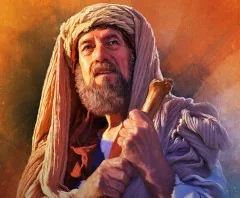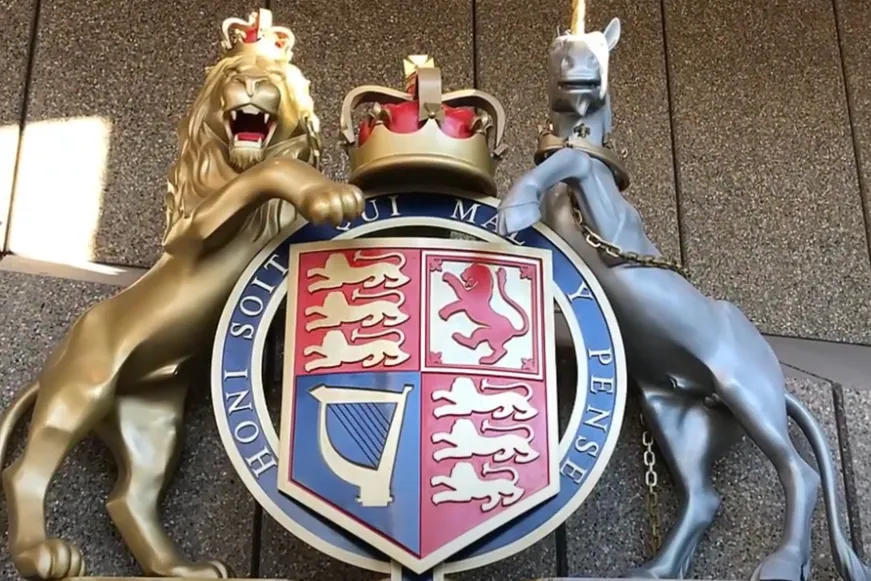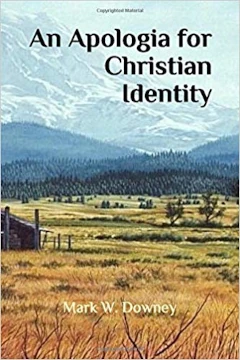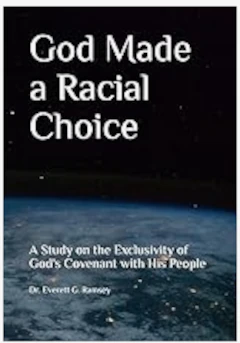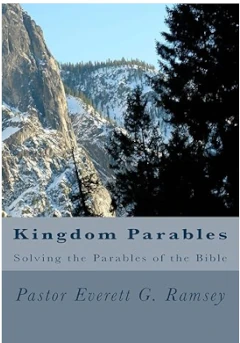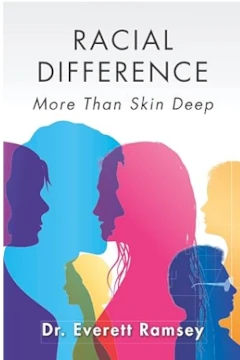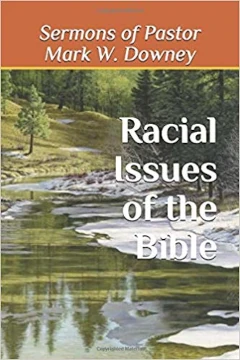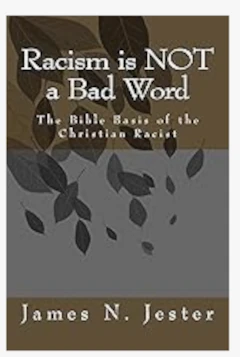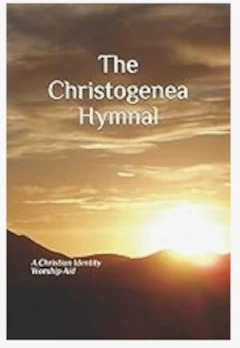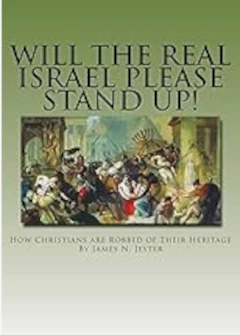Bible Biology - Part 5
IMAGE - PART 1
by Walt Giddings
Greetings kindred. We are on a first name basis here. My name is Walter. I am your pedagogue whose mission is to lead you to the Real Teacher. Is one of the marks of a Christian his capacity to see the invisible? Is this strange to an unbelieving world? Direct from Romans 1:20 we have this blessed assurance. “For the invisible things of him from the creation of the world are clearly seen, being understood by the things that are made.” This fifth Bible Biology lesson may be the most invisible.
Scripture Reading: Genesis 1:26-28
26 And God said, Let us make man in our image, after our likeness: and let them have dominion over the fish of the sea, and over the fowl of the air, and over the cattle, and over all the earth, and over every creeping thing that creepeth upon the earth.
27 So God created man in his own image, in the image of God created he him; male and female created he them.
28 And God blessed them, and God said unto them, Be fruitful and multiply, and replenish the earth, and subdue it: and have dominion over the fish of the sea, and over the fowl of the air, and over every living thing that moveth upon the earth.
v. 28: The dominion covenant, we recall, received a major interruption in Genesis chapter three: Adam fell. Heaven and earth separated, losing oneness. Adam became a prisoner of time, fell into the image of the earthy, becoming mortal, his eyes now holden, an invisible realm no longer visible to him. Without divine intervention Adam can no longer see into what is now invisible to him. This presents in this lesson some difficulty.
vv. 26-27: We have two words, both mentioned three times. The first is God. The second is our lesson title : Image. These two verses emphasize the creation of Adam “in the image of God.” (v 26) “after our likeness.” Where is the likeness? Was Adam also created “in the likeness of God?” (Genesis 5:1). Here in verse one, God’s infallible Word, our question is answered. “In the day that God created man, in the likeness of God made he him.” Why does God wait to tell us that “He created to make” His son Adam in his own likeness?
Why are we told all the way over in chapter five? There is a reason. God making Adam in his likeness is in contradistinction to something in verse three.
Genesis 5:3: And Adam lived an hundred and thirty years, and begat a son in his own likeness, in his own image; and called his name Seth:
“Adam..begat a son in his own likeness, in his own image.” Is Adam no longer in the image and likeness of God? Do we note well that the birth of Seth is after the Fall? Is aging for mortals? Adam is one hundred thirty years old. If Adam is no longer in the image of God, then is his son Seth, successor to Abel, in his father’s own image. Into what image did Adam fall? Into what image is his son Seth born? We are the direct lineal descendants of Seth, Noah, Shem the Semite, Eber, the Hebrew, Abraham, the Hebrew, Isaac, the miracle child, Israel, Isaac’s son, and the Saxons, Isaac’s sons, the descendants of the twelve tribes. We are the descendants of the House of Judah, the Jews, and the House of Israel, the dispersed among the Gentiles, the near and the far off. As the direct lineal descendants of the miracle child Isaac, into what image did we in our first earthly father fall? In what image are we? Do we see the need for this lesson? For several years I have had the sneaking suspicion that this book of The Bible is the last one Solomon composed, and that he completed it before his death. The Author is the Holy Spirit.
Ecclesiastes 3:18: I said in mine heart concerning the estate of the sons of men, that God might manifest them, and that they might see that they themselves are beasts.
This is not good! Are we really beasts? Whoa! Except when I am resting I am upright on two legs. I have hands, not paws. True, I have reflexes and instincts, but I can reason and make choices. I can even choose to overrule my instincts, according to that I have done, “whether it be good or bad.”
My defense is evil. I have placed myself in a great strait. The narrow between the rock and the hard place is embarassment. I have already read with you in unison the infallible Word of God, Ecclesiastes 3:18. My only sane choice is read and believe. It is a sane choice especially if I do not understand it! I choose to read and believe. I am a beast. What do I fail to understand?
Ecclesiastes 3:19: For that which befalleth the sons of men befalleth beasts; even one thing befalleth them: as the one dieth, so dieth the other; yea, they have all one breath; so that a man hath no preeminence above a beast: for all is vanity.
“A man hath no preeminence above a beast.” This “man” is H120 adam (aw-dawm). An Adam hath no preeminence above a beast. Men in verses 18 and 19 is H120 adam (aw-dawm). The expression “the sons of men” is in the Hebrew the sons of Adam. Is beast the image into which our first father sinned and fell?
Ecclesiastes 3:20: All go unto one place; all are of the dust, and all turn to dust again.
Adam fell into mortality. Were mortals already here when Adam fell? Beasts die. Adam dies. Are we beasts because we die? Or, do we die because we are in the image of beasts? Is there anything, anything at all, that differentiates Adam from beasts?
Ecclesiastes 3:21: Who knoweth the spirit of man that goeth upward and the spirit of the beast that goeth downward to the earth.
Follow closely in verse 21. Some Bibles give an alternate translation: “Who knows whether the spirit of the sons of Adam goes upward, and whether the spirit of the beast goes downward to the earth?” If that is the only difference between Adam and beasts, it is an invisible difference.
To some people, largely unfamiliar with these Scriptures, verses 18-21 may be an offense to their intellect. In the beginning of my understanding the meaning of these verses, I was in shock. I began to struggle between what I thought was true and the Truth of Scripture. I learned a basic law of Bible Study: scripture interprets scripture; we are not stuck with man’s interpretation. I began a search for a second witness. I looked for references to “our image”, and “the image of God.”
1 Corinthians 11:7: For a man indeed ought not to cover his head, for as much as he is the image and glory of God: but the woman is the glory of the man.
No wonder I was having a hard time with Ecclesiastes 3:18-21! There is no reference to beast here. These are the cover or headship verses of First Corinthians 11. If a man is the image and glory of God, how can he be no better than a beast?
Hold the ketchup here! The ketchup is GMO. Did we just read in Genesis that Adam man lost the image of God in the Fall? Should we be seeing the Harmony of the Scriptures? How does a direct lineal descendant of Adam have in the fallen condition the image and glory of God? Do we recall that Christ Jesus is the express image of God? Verse three is speaking of God’s Son.
Hebrews 1:3: Who being the brightness of his glory, and the express image of his person, and upholding all things by the word of his power, when he had by himself purged our sins, sat down on the right hand of the Majesty on high.
The word person is translated from G5287, hupostasis, hoop-os’-tas-is. It is also translated substance in Hebrews 11:1, as in “Faith is the substance of things hoped for, the evidence of things not seen.” The Scripture is speaking of the Father’s dear Son:
Colossians 1:15: Who is the image of the invisible God, the firstborn of every creature.
Christ is the image of the invisible God. Invisible. We are studying the Image. We are studying the invisible. The word, firstborn, is a reference to the Resurrection of Christ. 1 Cor. 15 is the Resurrection chapter of Paul’s first Epistle to the churches at Corinth.
1 Corinthians 15:20: But now is Christ risen from the dead, and become the firstfruits of them that slept.
We have added “the firstfruits of them that slept” to “the firstborn of every creature.” (v23).
1 Corinthians 15:23: But every man in his own order: Christ the first fruits; afterward they that are Christ’s at his coming.
Why do the Scriptures connect Christ’s being the express image of God’s substance or person to the Resurrection? What connection does Image have to the Resurrection? Cleopas and his companion have returned from their walk to Emmaus. They told the eleven apostles assembled with the disciples what Jesus said to them on the way, and how, in eating with Him, they knew him. And as they spoke Jesus appeared suddenly in their midst. Thinking he was a spirit, they were terrified.
Luke 24:38-39:
38 And he said unto them, Why are ye troubled? and why do thoughts arise in your hearts?
39 Behold my hands and my feet, that it is I myself: handle me and see; for a spirit hath not flesh and bones, as ye see me have.
Why is flesh and bone and blood not mentioned? Was his blood shed on Calvary? Flesh and bone, no blood!
1 John 3:2: Beloved, now are we the sons of God, and it doth not yet appear what we shall be: but we know that, when he shall appear, we shall be like him; for we shall see him as he is.
“It doth not yet appear what we shall be.” When will “what we shall be” appear? Does “what we shall be” appear “when He shall appear?” Does this verse say “we shall be like him?” Does that mean flesh and bone, no blood? “Beloved, now are we the sons of God?”
Can we get a second witness? Do our children have our DNA? Our children have twenty three chromosomes from the king of the house and twenty three chromosomes from the queen of the house. Our children bear our likeness. In the course of time, going from the twentieth century into the twenty first on the Roman Gregorian Calendar, God has been pleased to reveal something that has heretofore been invisible to us. Is DNA the outworking of the Image?
Galatians 3:26: For ye are all the children of God by faith in Christ Jesus.
Can we grasp this is by God’s gift of faith to us?
In 1 John 3:2 the Holy Spirit says “now”, as in “now are we the sons of God.” Does this mean there was a time, before, when this was not true? At the end of Luke chapter three we are given the genealogy of Jesus, tracing back to Adam. In the last verse of chapter 3, verse 38, we are given a clue that churchianity in large part fails to catch, much less learn.
Luke 3: 38: Which was the son of Enos, which was the son of Seth, which was the son of Adam, which was the son of God.
Why does the Holy Spirit say Adam was the son of God? Did Adam lose sonship in the Fall? If he lost sonship in the Fall, was it because he lost “the image of the heavenly?” If Sonship and Image were lost at the Fall, how do we ever get them back? How can we repent of the Sin our first earthly father Adam committed?
2 Corinthians 3:18: But we all, with open face beholding as in a glass the glory of the Lord, are changed into the same image from glory to glory, even as by the Spirit of the Lord.
When were we “changed into the same image?” And why is the image equated with “the Glory of the Lord?”
Are we now in the image of our God that Adam lost in the Fall? Do we really have that image back? Colossians 1:27 speaks of the mystery made manifest to God’s saints:
Colossians 1:27: To whom God would make known what is the rich es of the glory of this mystery among the Gentiles; which is Christ in you, the hope of glory.
If Christ in us is in the image of God’s person or substance, does this mean we are in the image of our Heavenly Father? Does the indwelling of the Holy Spirit, post Calvary, confer the new birth and God’s image, lost in the Fall? Scripture instructs us we have the Earnest of the Spirit. (2 Corinthians 1:22, 5:5; Ephesians 1:14). How significant a down payment on the redemption of our bodies at the Resurrection is this?! (mark Gal 3:27). When do we really have that image back?
Gal 3:27: For as many of you as have been baptized into Christ have put on Christ.
If we have “put on Christ,” are we back in God’s image? Return to Colossians 1. Look at verses 12,13, and 14. Are these verses showing us that we give thanks to God our Father for a mighty change he has wrought in us?
Colossians 1: 12-14:
12 Giving thanks unto the Father, which hath made us meet to be partakers of the inheritance of the saints in light:
13 Who hath delivered us from the power of darkness, and hath translated us into the kingdom of his dear Son;
14 In whom we have redemption through his blood, even the forgiveness of sins.
Who are we? Are we no longer who we used to be? Has God wrought a mighty change within us? Are we now God’s children returned to Him? 2 Cor 3:18 told us we “are changed into the same image.”
Romans 8:28-29:
28 And we know that all things work together for good to them that love God, to them who are the called according to his purpose.
29 For whom he did foreknow, he also did predestinate to be conformed to the image of his Son, that he might be the firstborn among many brethren.
I am alarmed that the Scripture says many brethren, not all. For those here who have children that are never coming home, we have a grieving Heavenly Father who has multitudes who will never come Home! He knows our Sorrow!
Is it also comforting to know that, as our Heavenly Father’s foreknown, we are predestinated to be conformed to the image of his dear Son? Are we gay? That is, are we in delirious, pedal to the metal joy that we are predestinated “to be conformed to the image of his Son?” Did I jar you? Is that only because the meaning of a word has been embezzled from us? Has there been much embezzlement in social discourse? Shall we avoid their trap to preclude Christian discourse? If we are in delirious, pedal to the metal joy that we are predestinated to be conformed to the image of his Son, we are gay! Do we love stealing from embezzlers?!
Is it true before our birth from above, there is something terribly wrong with each of us? Is it true after we are born again, or born from above, there is something that is growing awesomely right within each of us?
Colossians 3:9-10:
9 Lie not one to another, seeing that ye have put off the old man with his deeds;
10 And have put on the new man, which is renewed in knowledge after the image of him that created him.
Did we notice in verse 9 we have a choice? Can we choose to “lie not” to one another? Do we want that “old man with his deeds” to gain resurrection? God forbid! Some of us are so old now that every time we face a choice we tremble. We know choices have consequences.
Verse 10. Is the new man the result of being “renewed in knowledge after the image of him that created him?” Who is the first “him?” Who is he?
In whose image is the new man? Is the new man in the image of the Creator?
Ephesians 3:8-9:
8 Unto me, who am less than the least of all saints, is this grace given, that I should preach among the Gentiles the unsearchable riches of Christ;
9 And to make all men see what is the fellowship of the mystery, which from the beginning of the world hath been hid in God, who created all things by Jesus Christ.
Verse 9). God hid in himself the mystery, or the secret, from the beginning of the world. Did God hide this secret until after Calvary? Is our Saviour also our Creator?
Do we have a second witness that our Saviour is our Creator? Verse sixteen speaks of God’s Dear Son:
Colossians 1:16-18:
16 For by him were all things created, that are in heaven, and that are in earth, visible and invisible, whether they be thrones, or dominions, or principalities, or powers (authorities, or jurisdictions): all things were created by him, and for him.
17 And he is before all things, and by him all things consist.
18 And he is the head of the body, the church: who is the beginning, the firstborn from the dead; that in all things he might have the preeminence.
He “is the beginning.” There is a third witness God hid in plain sight in the older Scriptures. Time is a fugitive preventing us from taking this witness’ testimony.
Is the new man in us being built in the image of Christ?
Ephesians 2:10: For we are his workmanship created in Christ Jesus unto good works, which God hath before ordained that we should walk in them.
But, what if we have not the new birth, and are not “his workmanship created in Christ Jesus?” What if the new man is not being built inside us. What if we do not have Christ in us, the hope of glory? What if the spirit of this world indwells us? What if we are not marked for the first resurrection, the better resurrection? What if we do not study the Word of God to discern between the Genuine and the Counterfeit?
Romans 8:9). But ye are not in the flesh, but in the Spirit, if so be that the Spirit of God dwell in you. Now if any man have not the Spirit of Christ, he is none of his.
None of His! If we fail to rise in the better resurrection will we be hurt of the second death?!
Matthew 7:22-23:
22 Many will say to me in that day, Lord, Lord, have we not prophesied in thy name? and in thy name have cast out devils? and in thy name done many wonderful works?
23 And then will I profess unto them, I never knew you: depart from me ye that work iniquity.
A number of years ago I came across these Scriptures of admonition with a better anointing of understanding. The thought occurred to me to ask, How can Jesus not know anybody? Does John 2:24 say Jesus did not commit himself to those at the Passover in Jerusalem “because he knew all men?” I went to reference and discovered that the same Greek word translated “knew” in Matthew and John is ginosko, (ghin-oce-ko, G1097). Strong’s describes the word “to know (absolutely), in a great variety of applications and with many implications.” “And then will I profess unto them,” we never had a relationship, I never did get to know you. Does that mean in John 2:24 that Jesus did not commit himself to them because they had no relationship with him? Did he commit himself to the twelve apostles and the disciples, even though one was a traitor? Without the image of Christ being built in us, are we cooked in the Lake of Fire?
Without the image of Christ building in us, are we no better than beasts?
[Ecclesiastes 3:18]. We marveled earlier that the Preacher was praying that we might understand the estate of the sons of Adam, verse 19, that we have no preeminence above a beast, verse 20, we both go to dust again.
Is there a second witness that we are like beasts? Is there a witness that we lost the heavenly image? Is there a promise that we will regain what we lost?
1 Corinthians 15:49-50:
49 And as we have borne the image of the earthy, we shall also bear the image of the heavenly. Do we, before the Resurrection, bear now the image of the earthy? Are we flesh and bone and blood?
50 Now this I say, brethren, that flesh and blood can not inherit the kingdom of God; neither doth corruption inherit incorruption.
Jesus appeared to the disciples in the evening of the day he rose from the dead. In his resurrection body, did he say to them, “handle me and see; for a spirit hath not flesh and bones as ye see me have.” Flesh and bone, no blood. At the turn of the 19th century into the 20th century, remnant Christian churches still taught that the blood is congealed light. Is that why “without shedding of blood is no remission” of sin? [Hebrews 9:22]. Is the soul, or the life, in the blood? You may recall these post flood instructions from God to our forefather Noah:
Genesis 9:4: "But flesh with the life thereof, which is the blood thereof, shall ye not eat."
If the soul is in the blood and blood is congealed light, and the garments of light are God’s clothing, “when he shall appear, we shall be like him; for we shall see him as he is.” [1 John 3:2]. Is God’s image flesh and bone and glory? Are we no better now than beasts? Are beasts flesh and bone and blood? Is Adamkind exactly like beasts? Is there no difference between Adam and beasts?
1 Corinthians 15:39: All flesh is not the same flesh: but there is one kind of flesh of men, another flesh of beasts, another of fishes, and another of birds.
The Koine Greek word translated “men” is [G444] anthropos, anth’-ro-pos, from which our English word anthropology comes. Jesus used this word about himself. Son of man is Jesus’ favorite title or appellation for and about himself.
Matthew 16:13: "When Jesus came into the coasts of Caesarea Phillippi, he asked his disciples, saying, Whom do men say that I the Son of man am?"
“Whom do men say that I the Son of man am?” Men and man are translated as identical to “Adam.” The 1828 Webster in its entry for “man” notes that the H4327,miyn, whose seed meaning is species and translated kind, as in kind after kind, is the source of the English word man or men, and states: “Man in its radical sense agrees almost precisely with Adam in the Shemitic languages.”
This means that the field or discipline of anthropology has been turned on its head!
Are we promised that we, in the last Adam, will regain what the first Adam lost? Born of a woman into this life, are we born into the wrong bodies? Are these wrong bodies flesh and bone and blood, instead of, or in place of flesh and bone and Glory? The word man translates H120, Adam (aw-dawm’).
Job 14:1: Man that is born of a woman is of few days, and full of trouble.
“Of few days”: does this speak of our mortality? “Full of trouble”: does this speak of our inherited debased sin nature? Are we in the same image as Seth, sons in Adam’s “own likeness, after his image?”
Job 15:14: "What is [mortal] man that he should be clean? and he which is born of a woman, that he should be righteous?"
Man, as in mortal man, translates H582 enosh, en-oshe’ in the British convention for pronunciation, which many have heard as ee-nosh. Here, the same H582 enosh, mortal man, appears in this verse:
Job 25:4: "How then can [mortal] man be justified with God? or how can he be clean that is born of a woman?"
If we follow the use of the Hebrew word enoshe in the Hebrew-Aramaic Scriptures the evidence that it is used in many places to identify the mortal condition of all Israelites is undeniable. Are there mortals who are not Israelites?
God created Adam in his own image, after his own likeness. God exists. Paul preached in Athens, Acts 17, “in him we live, and move, and have our being...we are the offspring of God.”
1 Corinthians 15:49: "And as we have borne the image of the earthy, we shall also bear the image of the heavenly."
God exists. God is not dead. God died and rose from the grave. We need to ask one more question: Adam fell into the image of the earthy; do the earthy exist? Is that a fair question? Do the Scriptures testify to the existence of the earthy?
Are there mortals who were never Adam?
So many questions. So little time. To be continued, God willing, on another occasion.
Summary List of Scriptures
Genesis 1:26-28
Genesis 5:3
Ecclesiastes 3:18-21
1 Corinthians 11:7
Hebrews 1:3
Colossians 1:15
1 Corinthians 15:20, 23
Luke 24:38-39
1 John 3:2
Galatians 3:26
Luke 3:38
2 Corinthians 3:18
Colossians 1:2
*Galatians 3:27
Colossians 1:12-14
Romans 8:28-29
Colossians 3:9
Ephesians 3:8-9
Colossians 1:16-18
Ephesians 2:10
*Romans 8:9
Matthew 7:22-23
1 Corinthians 15:49-50
Hebrews 9:22
Genesis 9:4 (1 John 3:2)
1 Corinthians 15:39
Matthew 16:13
Job 14:1
Job 15:14
Job 25:4
1 Corinthians 15:49

